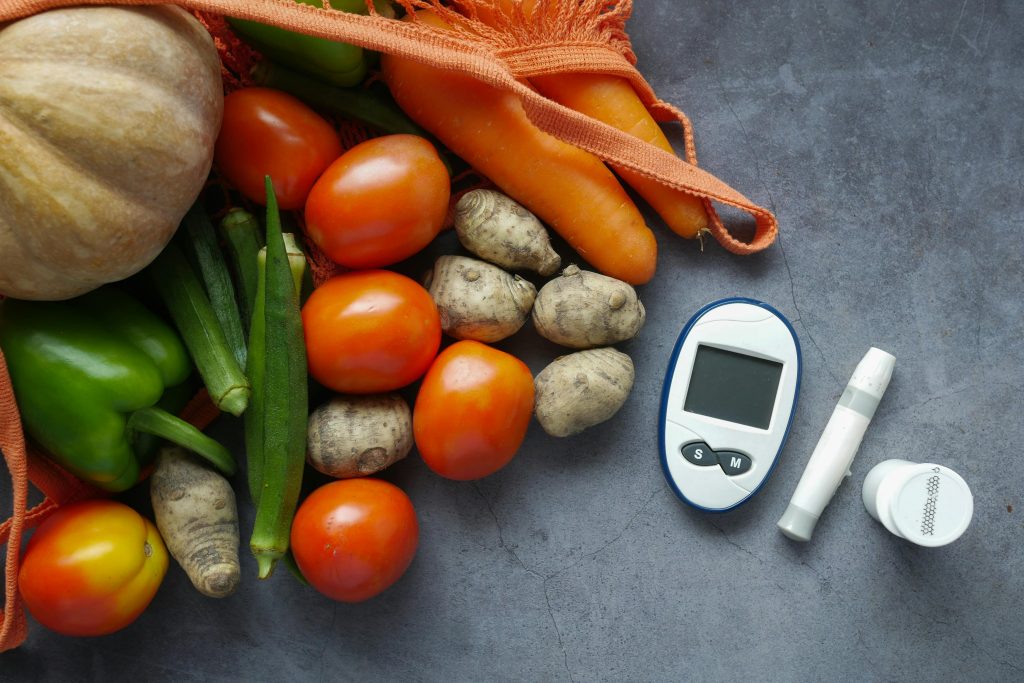
Creating a meal plan for diabetes is crucial for managing blood sugar levels and overall health. A well-designed plan helps you make healthier food choices, control portion sizes, and maintain a balanced diet. This guide provides practical steps to create a diabetes meal plan that fits your lifestyle and dietary needs.
Understanding Diabetes and Diet
What is Diabetes?
Diabetes is a chronic condition that affects how your body processes blood sugar (glucose). There are two main types: Type 1 and Type 2. In Type 1 diabetes, the body does not produce insulin, while in Type 2, the body either does not produce enough insulin or cannot use it effectively. Proper diet plays a significant role in managing both types of diabetes, helping to keep blood sugar levels within a healthy range and preventing complications.
Importance of Diet in Diabetes Management
Diet is a cornerstone of diabetes management. The right food choices can help regulate blood sugar levels, reduce the risk of diabetes-related complications, and improve overall health. A balanced diet that includes a variety of nutrients supports the body’s needs and helps maintain energy levels throughout the day. It is essential to focus on the quality and quantity of carbohydrates, incorporate fiber-rich foods, and ensure adequate protein intake.
Steps to Create a Diabetes Meal Plan
Assessing Your Nutritional Needs
The first step in creating a diabetes meal plan is understanding your nutritional requirements. Consult with a healthcare provider or a dietitian to determine your caloric needs, based on factors such as age, weight, activity level, and the type of diabetes you have. Knowing your nutritional needs helps you tailor your meal plan to achieve your health goals.
Choosing the Right Foods
Select foods that have a low glycemic index (GI), as they have a lesser impact on blood sugar levels. Incorporate a variety of vegetables, whole grains, lean proteins, and healthy fats. Foods high in fiber, like fruits, vegetables, and whole grains, can help control blood sugar levels. Avoid processed foods and sugary snacks, which can cause spikes in blood sugar.
Meal Timing and Portion Control
When managing diabetes, timing and portion sizes of meals are critical. Eat meals at regular intervals to maintain steady blood sugar levels. Spread carbohydrate intake evenly throughout the day and avoid skipping meals. Portion control helps prevent overeating and assists in weight management, which is especially important for those with Type 2 diabetes.
Best Foods for a Diabetes Meal Plan
Low-Glycemic Index Foods
Foods with a low glycemic index are beneficial for managing blood sugar levels. These include non-starchy vegetables like leafy greens, broccoli, and peppers. Whole grains like oats, quinoa, and brown rice are better choices compared to refined grains. Legumes, nuts, and seeds also fall into this category, providing sustained energy without causing spikes in blood sugar.
High-Fiber Foods
Fiber is crucial in a diabetes meal plan as it helps slow the absorption of sugar and improves blood sugar levels. High-fiber foods include fruits like apples, berries, and pears, vegetables such as carrots and Brussels sprouts, and legumes like beans and lentils. Incorporating these foods can improve digestive health and help manage weight.
Lean Proteins
Protein helps maintain muscle mass and keeps you feeling full longer, which can aid in weight management. Opt for lean protein sources such as chicken, turkey, fish, tofu, and legumes. Fish rich in omega-3 fatty acids, like salmon and mackerel, are particularly beneficial. Limit red meat and processed meats to reduce the risk of heart disease.
Sample Diabetes Meal Plan
Breakfast Ideas
Start your day with a balanced breakfast that includes protein, healthy fats, and fiber. Examples include a veggie omelet with whole grain toast, Greek yogurt with berries and nuts, or oatmeal topped with fruit and a dollop of almond butter. These options help stabilize blood sugar levels and provide lasting energy.
Lunch Ideas
For lunch, focus on balanced meals that combine vegetables, whole grains, and lean protein. A quinoa salad with grilled chicken and mixed vegetables, a whole grain wrap with turkey, avocado, and spinach, or a lentil soup with a side of fresh fruit are excellent choices. These meals are nutrient-dense and help keep blood sugar levels steady.
Dinner Ideas
Dinner should be satisfying but not too heavy. Consider meals like grilled salmon with a side of roasted vegetables, a stir-fry with tofu and brown rice, or a hearty vegetable stew. Incorporating a variety of colors and textures can make your meals more enjoyable and nutritious.
Tips for Sticking to Your Meal Plan
Meal Prep Strategies
Preparing meals in advance can help you stay on track with your diabetes meal plan. Plan your meals for the week, make a shopping list, and set aside time for cooking. Batch cooking and portioning out meals can save time and reduce the temptation to reach for unhealthy options.
Healthy Snack Options
Snacking can be part of a healthy diabetes meal plan if done correctly. Choose snacks that combine protein and fiber, such as a small apple with peanut butter, a handful of nuts, or carrot sticks with hummus. Avoid snacks high in sugar and refined carbohydrates to prevent blood sugar spikes.
Creating a diabetes meal plan that works involves understanding your nutritional needs, choosing the right foods, and maintaining proper meal timing and portion control. Incorporating low-glycemic, high-fiber foods and lean proteins can help manage blood sugar levels effectively. With careful planning and preparation, you can enjoy a varied and satisfying diet that supports your overall health and diabetes management.







Hey people!!!!!
Good mood and good luck to everyone!!!!!